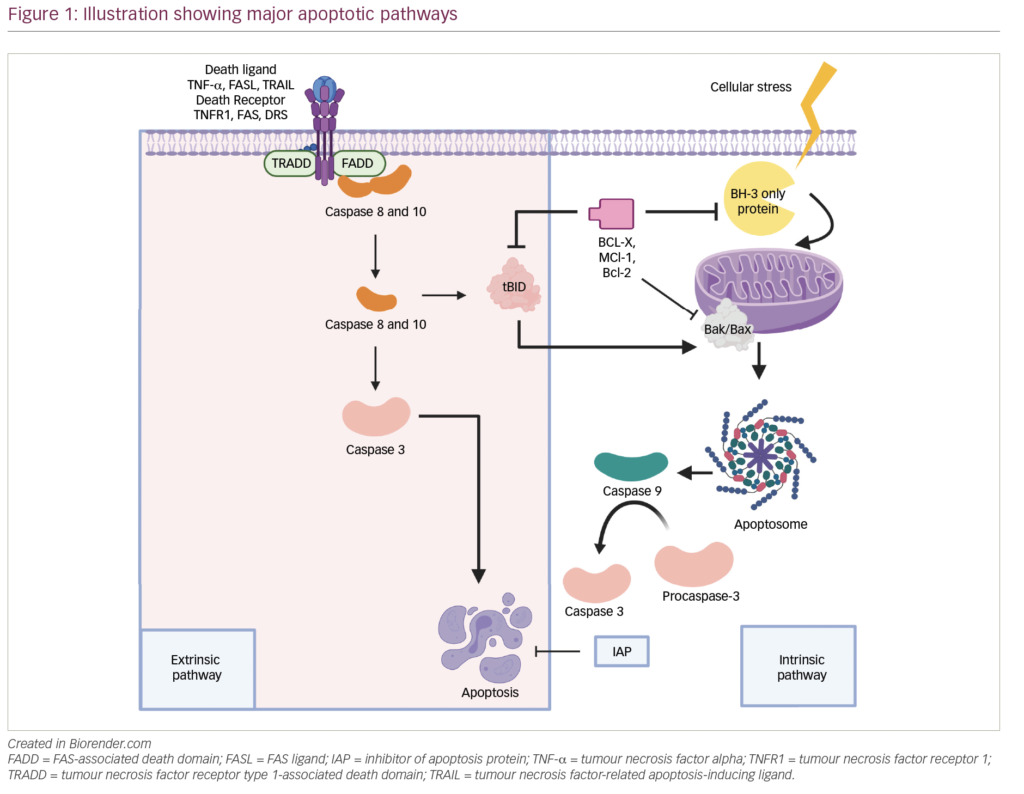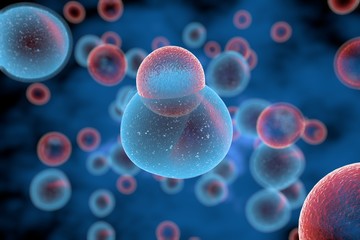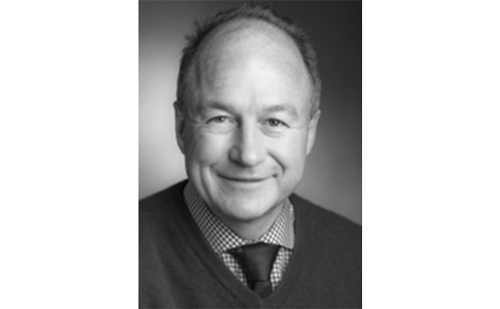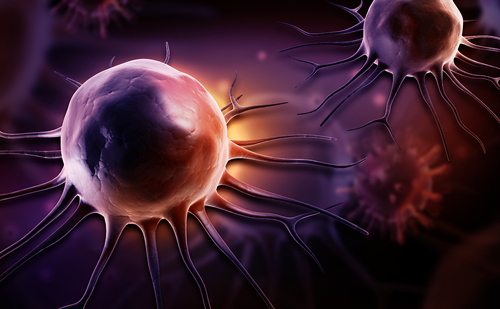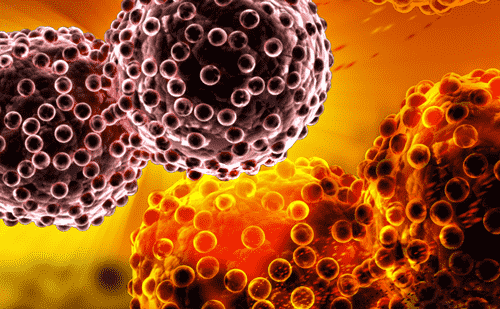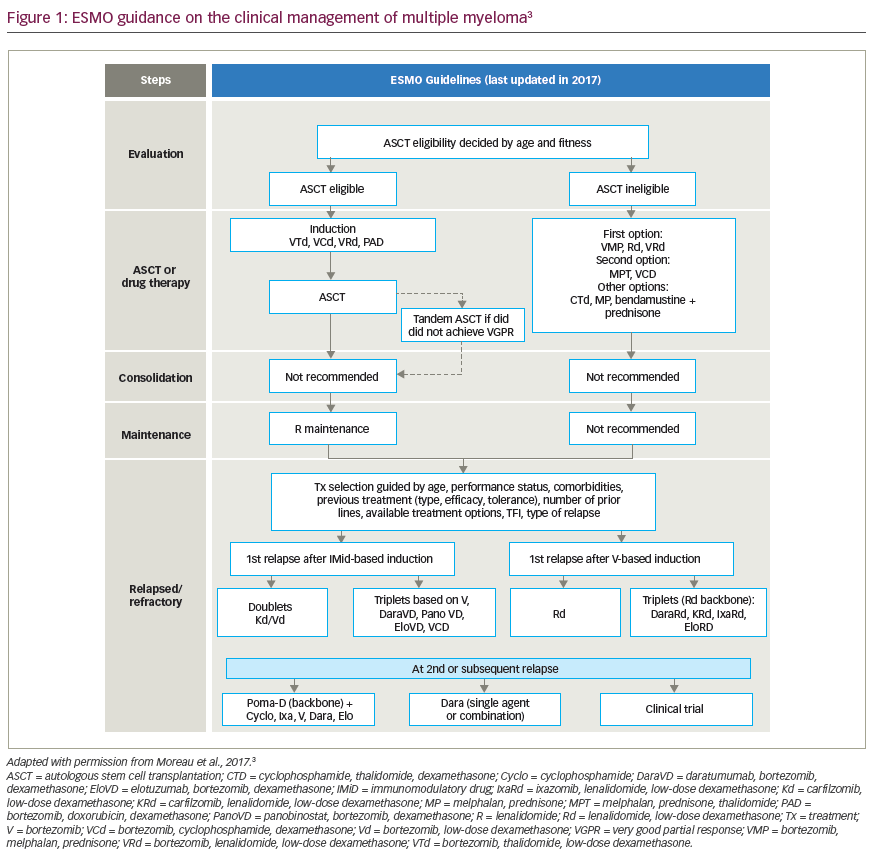Multiple myeloma is a malignant disorder characterized by the proliferation of plasma cells. It accounts for 10% of hematological cancers and 1% of all cancers. The disease is uniformly fatal with a median survival of approximately three years with conventional chemotherapy (CC), although the outlook has improved with the integration of newer therapies including high-dose therapy followed by autologous stem cell transplantation (HDT-ASCT). Currently, multiple myeloma is the most common indication for ASCT in North America and Europe. ASCT remains the standard of care in eligible patients <65–70 years of age (although age is not a criteria in the US) performed either up-front or at relapse: it is mostly performed up-front after induction therapy. The attainment of complete response (CR) is held to be a surrogate for improved survival and is the aim of ASCT.
CR is characterized by undetectable serum and urine monoclonal proteins (by immnofixation), absence of plasmacytosis (<5% plasma cells in marrow), disappearance of plasmacytomas, and stable or improving bone disease. Stringent CR (sCR) is a new criterion that refers to normalization of the free light chain (FLC) ratios and the absence of monoclonal plasma cells in the marrow. Very good partial response (VGPR) refers to an absence of monoclonal proteins by electrophoresis but not by immunofixation or >90% reduction in level of serum M component proteins and urinary M proteins <100mg/24 hours.1 With CC comprising melphalan and prednisolone, CR was attained in <5% patients. However, the median overall survival (OS) in patients achieving CR was 5.1 years compared with 3.3 years for other responders.2 ASCT has helped improve CR and VGPR rates over and above CC and is usually performed after induction therapy as consolidation.
Recently, the introduction of newer agents such as bortezomib, lenalidomide, thalidomide, liposomal doxorubicin, etc. has led to a flurry of trials aimed at testing various combinations in order to improve survival. Higher rates of CR and VGPR observed with these agents have led to their integration into induction therapies. It has raised questions in terms of redefining the inclusion criteria/timing and expected benefits of ASCT over and above maintenance with these therapies, especially in responding patients; however, this awaits further trials.
Autologous Stem Cell Transplantation in Multiple Myeloma
Prospective randomized trials have been conducted to evaluate the efficacy of ASCT in terms of attainment of CR, response rate (RR), and improvements in progression-free survival (PFS), and, OS and transplant-related mortality (TRM).3–8
CR rates, median PFS, median OS, and TRM have ranged from 17 to 44.5%, 25 to 42 months, 47.8 to 67 months, and 3 to 7%, respectively.3–8 However, only two of the trials, the French Myeloma Intergroup (IFM)3 and the UK Medical Research Council (MRC VII trial),4 demonstrated a survival advantage with ASCT. The former trial demonstrated median OS of 57 months versus 37 months and the latter demonstrated a median OS of 54.1 months versus 42.3 months for ASCT over CC. However, other trials had some deficiencies. A Spanish study, Programa para el Estudio de la Terapeutica en Hemopatia Maligna (PETHEMA), demonstrated improved CR rates (30 versus 11%) with ASCT compared with CC but no improvement in OS (61 versus 66 months). This has been ascribed to the fact that only responding patients were taken up for transplantation. Refractory patients who were enrolled for the study could also have derived benefit from ASCT.5
Two trials were designed to specifically examine the effect of up-front versus delayed ASCT (in case of relapse or refractory disease) on survival rates. There was no difference in OS, although the French trial reported higher CR rates and better PFS in favour of early transplantation.6,7 In another large US intergroup trial comparing CC with ASCT, no difference could be demonstrated, partly because the cross-over allowed for transplantation at relapse in patients on the CC arm, and also because the combination of total body irradiation (TBI) and melphalan dose of 140mg/m2 rather than the standard 200mg/m2 resulted in a disappointing CR rate of 17%.8
The trials incorporating melphalan and TBI had lower CR rates (17–22%)3,8 compared with those in which melphalan 200mg/m2 was used resulting in CR rates of 30–44%.4–7 Thus, melphalan 200mg/m2 is now the conditioning regimen of choice. These days most centres claim a TRM of ≤1%, rendering ASCT an acceptably safe treatment modality.
CR has been demonstrated to be the most important factor influencing long-term survival. In the IFM study, patients achieving a CR/VGPR had significantly higher five-year OS rates of 72% compared with 39% among patients who had PR.3 In a retrospective analysis of 721 newly diagnosed patients who underwent ASCT, it was found that patients achieving CR had a median survival of nine to 14 years compared with 5.9 years for patients who achieved PR.9
Attempts at Improving the Efficacy of Autologous Stem Cell Transplantation
Induction Therapy and the Effect of Autologous Stem Cell Transplantation
The most common treatment strategy involves use of induction chemotherapy followed by HDT-ASCT (in eligible patients).
Initial Regimens—Vincristine, Adriamycin, Dexamethasone/Dexamethasone/Thalidomide, Dexamethasone
Initially, the most popular regimens used were single-agent pulsed dexamethasone or vincristine, adriamycin, and dexamethasone (VAD). RR of 40–43% (CR rates ranging from 0 to 3%) have been reported with dexamethasone.10–12 With VAD, RRs ranging from 52 to 67% and CR rates ranging from 3 to 9% have been described.13,14 Following VAD, the next most common induction regimen was the oral regimen of thalidomide and dexamethasone (TD). RRs ranging from 76 to 80% and CR rates ranging from 7 to 25% have been observed.12–15 After ASCT, CR rates ranging from 30 to 48.2% (post-VAD induction) have been described.13,14,16 However, studies using TD and single-agent dexamethasone have demonstrated essentially similar results.10–16 In one study it was found that at six months post-transplantation, the benefit of TD over VAD was not observed and the VGPR or better rates were comparable (44.4% in the TD arm and 41.7% in the VAD arm).14 Thus, ASCT seems to cover for the seeming inefficiencies of these induction regimens.
Newer Combinations—The Promise of Improved Results After Autologous Stem Cell Transplantation
Bortezomib and Dexamthasone
The combination of bortezomib and dexamethasone (VD) has been associated with RR ranging from 67 to 88% (VGPR or better rates ranging from 23 to 47%) and CR/nCR rates ranging from 13 to 21%. Post-ASCT, RR in the range of 90%, CR/nCR rates of up to 35%, and VGPR or better rates up to 62% have been described.17–20
Lenalidomide and Dexamethasone
Lenalidomide and dexamethasone (LD) use was associated with RR of 91% and CR rates of 18%. In patients who underwent ASCT, the two-year OS and PFS was 92 and 83%, respectively, compared with 90 and 59%, respectively, for those who did not undergo ASCT. However, the yield of stem cells diminished after prolonged use of this combination and therefore it has been suggested that an early stem cell harvest might be necessary in cases of patients planned for delayed ASCT.21
Bortezomib-based Combinations with Other Drugs
Bortezomib, doxorubicin, and dexamethasone (PAD) was evaluated as induction using bortezomib 1.3mg/m2 (PAD1, n=21) or 1mg/m2 (PAD2, n=20). CRs/VGPRs with PAD1/PAD2 were 62 and 42% post-induction and 81 and 53% post-transplantation, respectively. PFS (29 versus 24 months) and OS (two years 95 versus 73%) were statistically similar, but favoured PAD1 versus PAD2.22 Therefore, standard-dose bortezomib was associated with better RRs compared with the lower dose in which the toxicity was lower. This result was also suggested in earlier reports. With low-dose bortezomib, CR rates of 11% were seen that improved to 37% post-ASCT.23 RR of 95% and CR rates of 24% were observed with standard-dose bortezomib, and post-ASCT CR rates improved to 57% (81% had VGPR or better responses.).24
Liposomal, Doxorubicin-based Regimens
Bortezomib, liposomal doxorubicin, and dexamethasone have been used with RR of 93% (63% VGPR or better) and CR rates of 43%. Following ASCT, CR rates improved to 65% (75% of the responses were VGPR or better).25 In regimens excluding dexamethasone (bortezomib, liposomal doxorubicin alone), RRs of 79% and CR rates of 28% have been observed.26 The three-drug regimen of dexamethasone, vincristine, and liposomal doxorubicin (DVd) yielded RRs of 66%.27 Four-drug regimens comprising dexamethasone, vincristine, liposomal doxorubicin, and thalidomide (DVd + T) have been used with RRs of 74–83% and CR rates varying from 10 to 36%.28,29
Bortezomib and Thalidomide/Lenalidomide Combinations
The three-drug combination (VTD) of bortezomib, and TD has resulted in 87% RR and up to 36% CR/nCR rates. After ASCT CR/nCR rates improved to 57%. VGPR or better rates were seen in 77% of cases. In the Gruppo Italiano Malattie EMatologiche dell’Adulto (GIMEMA) trial the high CR rates achieved after induction with VTD were not influenced by the presence of deletion 13 or t(4;14) thus suggesting their role in overcoming high-risk cytogenetics.30
Use of VDT PACE (cisplatin, doxorubicin, dexamethasone, etoposide) resulted in OS of 89% and CR rates of 22%. After ASCT, CR/nCR rates improved to 75%.31 The combination of lenalidomide, bortezomib, and dexamethasone yielded CR rates of 20% and RR of 87%.32 Therefore, ASCT improves on the RRs of the induction regimens including those incorporating newer agents.
The Role of Tandem Transplantation
Tandem transplantation has been used to improve the results of ASCT. Sixty-nine percent CR rates were reported with tandem ASCT in a select group of patients.33 Barlogie reported a 41% CR rate with such a strategy (total therapy).34 Attal et al. compared single versus tandem ASCT in 399 patients and found that although the CR rates were equivalent (42 versus 50%), the seven-year event-free survival (EFS) and OS were significantly improved—10 versus 20% EFS, 21 versus 42% OS35—while the Bologna36 trial did not shown a significant benefit for tandem transplantation.
Tandem transplantation is useful in patients having PR or stable disease in response to the first transplantation and is not usually recommended in those who have had a CR or VGPR. Furthermore, it has been suggested that the negative impact of having both cytogenetic abnormalities: deletion 13 and t(4;14) that were associated with very low VGPR rates with TD were offset by tandem transplantation. The VGPR rates were 12% in this subgroup of patients compared with 41–50% in patients with either of these abnormalities when given an induction regimen comprising TD. The three-year PFS and OS were nearly identical after tandem ASCT (70 versus 77% and 92 versus 88%, respectively).37
Incorporation of Newer Agents to Tandem Autologous Stem Cell Transplantation
The Total Therapy 2 (TT2) trial included thalidomide in the induction, consolidation, tandem ASCT, and maintenance strategy. After transplantation, the CR rate in the thalidomide arm was 62% versus no thalidomide 43%, and although the EFS improved (48 versus 38%) there was no difference in OS because of the more aggressive nature of the disease at relapse in those who were on thalidomide.38,39
The Total Therapy 3 trial has incorporated VDT-PACE into induction, consolidation, tandem ASCT, and maintenance strategy and reported 83% CR/nCR rates for patients 24 months into the programme.40 With better CR/VGPR rates after a single ASCT following the incorporation of the newer induction regimens, the requirement of a tandem transplantation is expected to reduce.
Use of Drug Combinations—Bortezomib and Melphalan in the Conditioning Regimen
In a preliminary study, a combination of bortezomib and melphalan was used in the conditioning regimen in 35 poor-risk patients (including those who did not achieve VGPR after a first transplantation). Three months after ASCT, 63% VGPR including 31% CR was observed suggesting that the combination had the potential to surpass the responses observed with melphalan alone, but this would require confirmation from other studies, especially from those in which bortezomib was used as the induction regimen.41
Discussion
ASCT represents one of the most important therapeutic options in the treatment of eligible patients suffering from multiple myeloma. Newer drugs such as thalidomide, bortezomib, and lenalidomide have been used. Studies have demonstrated that ASCTs performed after induction incorporating these new agents are associated with higher RRs. The OS benefit seen with these treatment strategies will become evident in course of time once the final results of these trials become known. These drugs have also been combined with chemotherapeutic agents and used in patients ineligible for transplants.
Regimens such as melphalan, prednisone, and thalidomide (MPT),42–44 melphalan, bortezomib, and prednisone (MPV),45 and melphalan, prednisone, and lenalidomide (MPR)46 have yielded impressive results with RR varying from 76 to 89% and CR rates ranging from 15.6 to 30%. In fact, the MPT regimen was superior to the intermediate-dose ASCT (melphalan 100mg/m2).44 However, the survival benefit has to be assessed against high-dose chemotherapy as against intermediate-dose ASCT (melphalan 100mg/m2) in order to claim whether these treatments are equivalent or superior to HDT-ASCT.
There is a debate as to whether patients in CR/nCR or even VGPR after induction therapy should be subjected to upfront ASCT or placed on maintenance therapy. In such situations, ASCT could then serve as a treatment option at relapse. The role of allogenic transplantation also keeps evolving but is tempered by the spectre of increased procedure related morbidity and mortality. Currently, ASCT remains the standard of care in eligible patients. Better induction strategies will hopefully improve the results of the ASCT in terms of prolonged OS and PFS in patients suffering from multiple myeloma. ■





